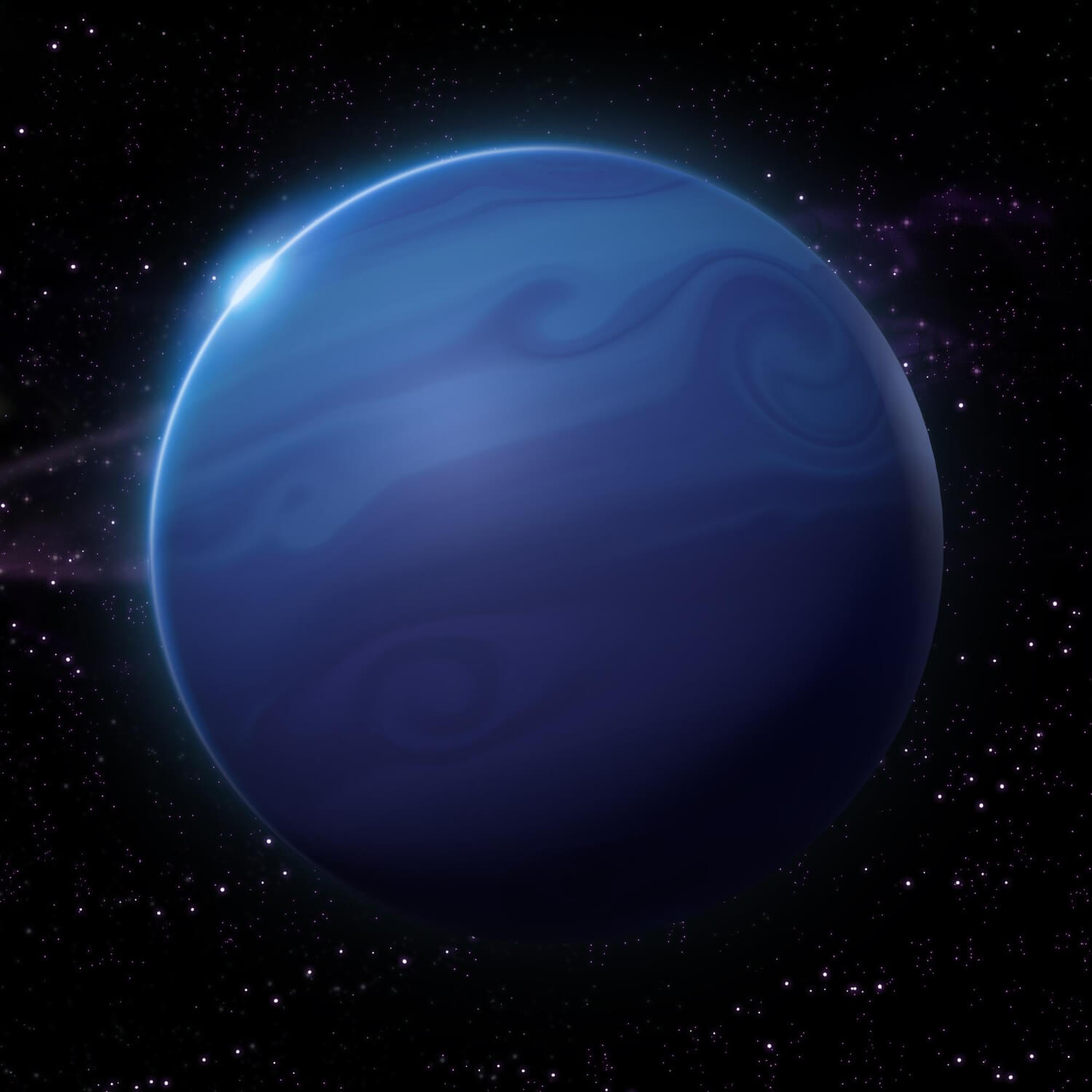Neptune is the eighth planet from the Sun, which is slightly more massive than its twin planet Uranus. Neptune always captures the interests of scientists and space travellers because of its magnificent blue tint, tumultuous atmosphere, and cryptic characteristics. Today we will explore amazing and interesting facts about Neptune, shining light on the mysteries of our solar system’s ice giant.
Also Read: Tips To Get Children Interested In Space Science
Interesting facts about Neptune for kids:
Here is some interesting information about Neptune planet for kids to know and learn –The Distant Planet:
Neptune is the planet that is most distant from the Sun, roughly 4.5 billion kilometers. The most interesting facts about Neptune is, It takes more than four hours for sunlight to reach Neptune. Due to this reason, Neptune is called the most distant and isolated planet in our solar system.
A Blue World:
The amazing facts about Neptune is its bright presence. Neptune’s distinctive blue colour comes from its atmosphere. Methane gas in the atmosphere absorbs red light, reflecting blue light back into space, creating the planet’s vibrant blue appearance.
Ice Giant:
The cool facts about Neptune is it is classified as an ice giant, like its twin planet Uranus. Its composition primarily consists of various ices, such as water, ammonia, and methane, along with rocky material at its core.
Stormy Weather:
The atmosphere of Neptune is known for its unstable and severe weather patterns. It has the highest wind speeds observed in the solar system, with guts reaching up to 2,400 km per hour.
The Great Dark Spot:
Similar to Jupiter’s Great Red Spot, Neptune has its own storm system called the Great Dark Spot. However, it mysteriously disappeared when observed by the Voyager 2 spacecraft in 1989, leaving scientists puzzled.
The Neptunian Rings:
Neptune possesses a system of rings composed of dust particles and icy debris. Although not as prominent as Saturn’s rings, they add to the planet’s celestial beauty and complexity.
Voyager 2’s Encounter:
In 1989, NASA’s Voyager 2 spacecraft flew by Neptune, providing us with our first close-up images and valuable data about the planet. It revealed intricate details about Neptune’s rings, atmosphere, and intriguing moons.
Triton:
Here are The shocking facts about Neptune’s Triton is home to explosive eruptions and cryovolcanoes, which launch out a combination of nitrogen, water, and other volatile compounds rather than lava. These ice eruptions produce vibrant plumes and unique surface characteristics.
Triton’s Retrograde Orbit:
Neptune’s largest moon, Triton, is unique because it orbits the planet in a retrograde direction. Therefore, it rotates in the opposite direction to Neptune, indicating it was taken by the planet’s gravity.
The Weird Magnetic Field:
Neptune has a highly unusual magnetic field that is tilted and offset from its center. This peculiarity suggests the presence of complex internal dynamics and magnetic interactions within the planet.
The Smallest Storms:
While Neptune is known for its large storms, it also experiences smaller-scale storms called “scooter” and “dark spot” storms. These storms, resembling dark spots, move at high speeds across the planet’s surface.
Also Read: Interesting Facts about Space for Kids
Neptune’s Active Atmosphere:
Neptune’s atmosphere is constantly changing and evolving. Large-scale storms and cloud formations appear and disappear, showcasing the dynamic nature of this icy giant.
Neptune’s Tilted Axis:
Neptune’s axis is tilted at a significant angle, much like Uranus. This tilt causes extreme seasonal variations and leads to long summers and winters on the planet.
Neptunian Quakes:
Scientists believe that Neptune experiences seismic activity, or “Neptunian quakes,” caused by the interaction between the solid core and the surrounding icy mantle. These quakes help researchers understand the planet’s internal structure.
Neptune’s Moon Mysteries:
Neptune, like several of its neighbours, has more moons. Here are some fun facts about Neptune’s moons, which are made up of 14 individual moons, each with its own distinct traits. Some moons, such as Nereid, have very eccentric orbits, whilst others, such as Proteus, have uneven forms and a variety of surface characteristics.
Larissa’s Unusual Orbit:
Neptune’s moon Larissa has a highly elliptical and unpredictable orbit. Its path varies due to gravitational interactions with other moons, resulting in irregular and chaotic movement around the planet.
The Hazy Atmosphere:
Neptune’s atmosphere is shrouded in a thick layer of haze comprising hydrocarbons that give the planet a hazy appearance. This haze makes it challenging to observe the planet’s surface in visible light.
The Dark Side:
The dark and cool facts about Neptune is the other side of Neptune that faces away from the Sun and experiences extreme cold and darkness. This side remains shrouded in perpetual night, with temperatures dropping to -220 degrees Celsius (-364 degrees Fahrenheit).
The Neptunian Year:
Neptune’s year, or the time it takes to orbit the Sun once, is equal to approximately 165 Earth years. This prolonged year means that a single Neptunian year lasts longer than the lifetimes of several generations.
The Quest for Exploration:
Although no spacecraft has visited Neptune since Voyager 2, scientists and researchers continue to plan and propose future missions to further explore this intriguing ice giant and unravel its many mysteries.
Also Read: Science Stream Career Options after 10th & List of Courses after 12th
Conclusion:
Neptune, with its distant and exciting presence, creates an environment of mystery and awe. By sharing these wondering and unknown facts about Neptune, children can get a taste of the wonders that make Neptune a hypnotic and intriguing visit in our vast solar system while also raising their interest and curiosity about space. Visit EuroSchool to know better about cosmic secrets that lay beyond our own planet.









